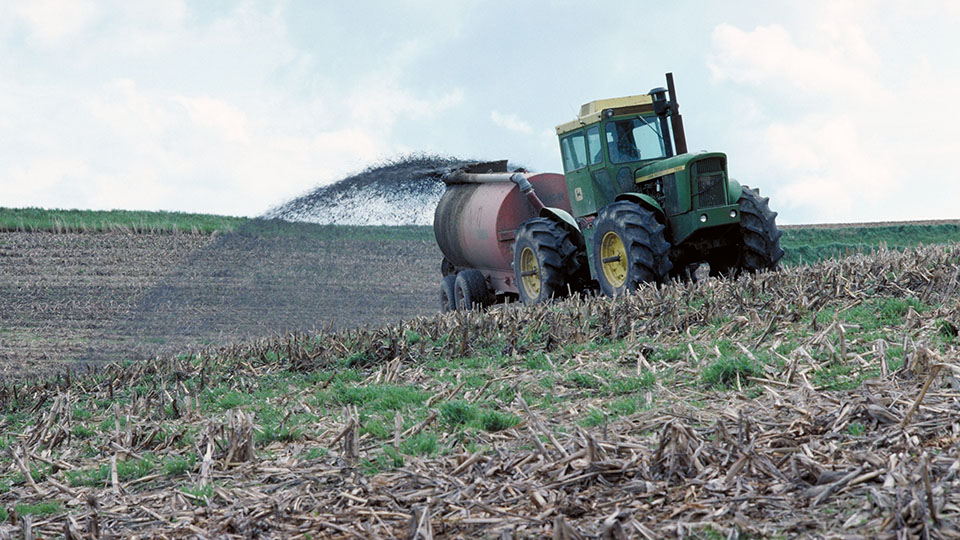Manure Application

Manure should be applied so that the nutrients are utilized in an environmentally safe, and beneficial manner. This requires knowing the characteristics of your manure and your soil. Manure tests should be conducted annually. Soil tests should be conducted each year for annual crops, and a minimum of every three years for perennial crops.
Application Rates
Manure application rates should be based on the crop nutrient needs (see resources listed below). Use realistic yields to determine the crop nutrient needs.
Adjustments should be made for: 1) Previous legume crops; and 2) Previous manure applications.
Manure application rates may need to be adjusted based on the soil test phosphorus (P) levels (Olsen method).
- 0-50 ppm -- N or P needs of plant
- 50-100 ppm -- P needs of plant
- >100 ppm -- NO MANURE APPLICATION
Incorporation
Manure should be incorporated within 3 days after application. For perennial crops, and no-till fields, incorporation is not possible, and more of the nitrogen is lost due to volatilization. Although manure can be applied to no-till ground and perennial crops, extra precautions need to be taken to ensure no runoff will occur.
Winter Application
Winter application of manure should be avoided as the potential for runoff and discharges is high. If winter application is essential, manure application should only be on fields that are considered low risk. The Utah Manure Application Risk Index (UMARI) should be used to identify when winter applications of manure on frozen and/or snow-covered ground are considered low risk and therefore allowed.
Regardless of when manure is applied, additional land management measures may be needed to ensure manure and runoff water do not leave a site after spreading.
Resources
To determine crop nutrient needs, the following resources can be used. [Note: Nutrient removal rates provided are on a dry basis. Crops that have high moisture contents such as corn silage need to be adjusted for the moisture %. See NRCS Agricultural Waste Handbook p. 6-18 for an example calculation.]

